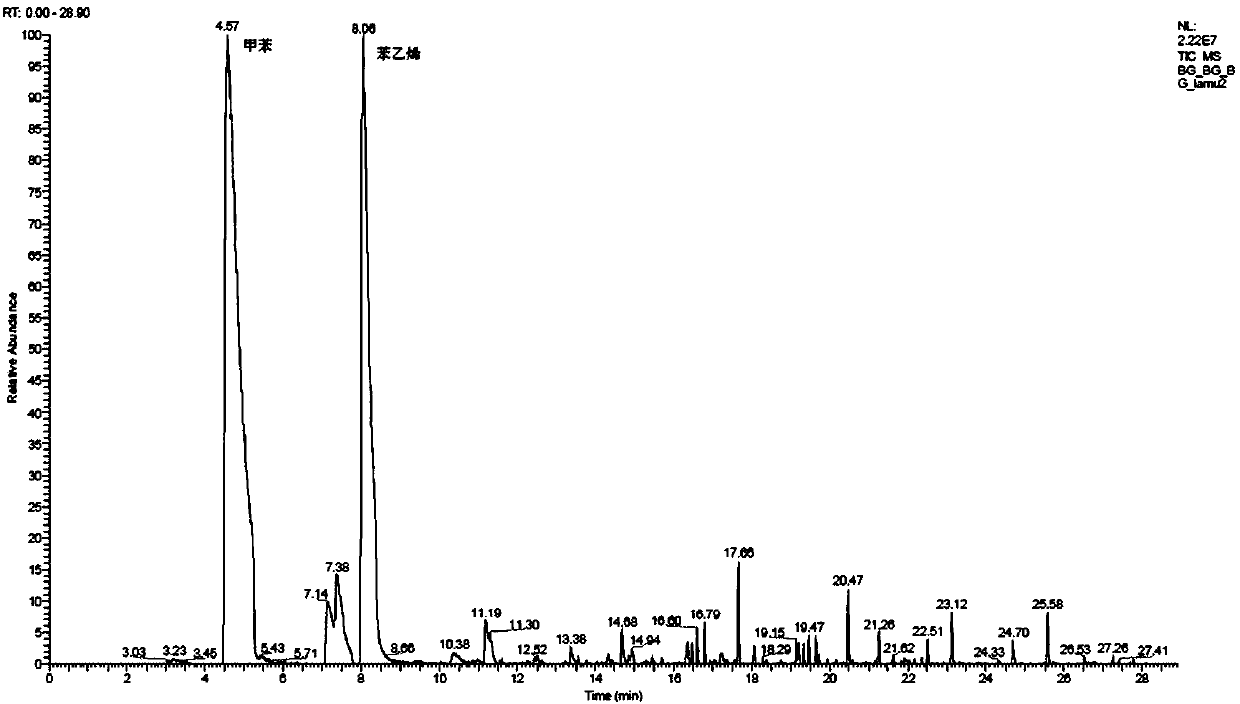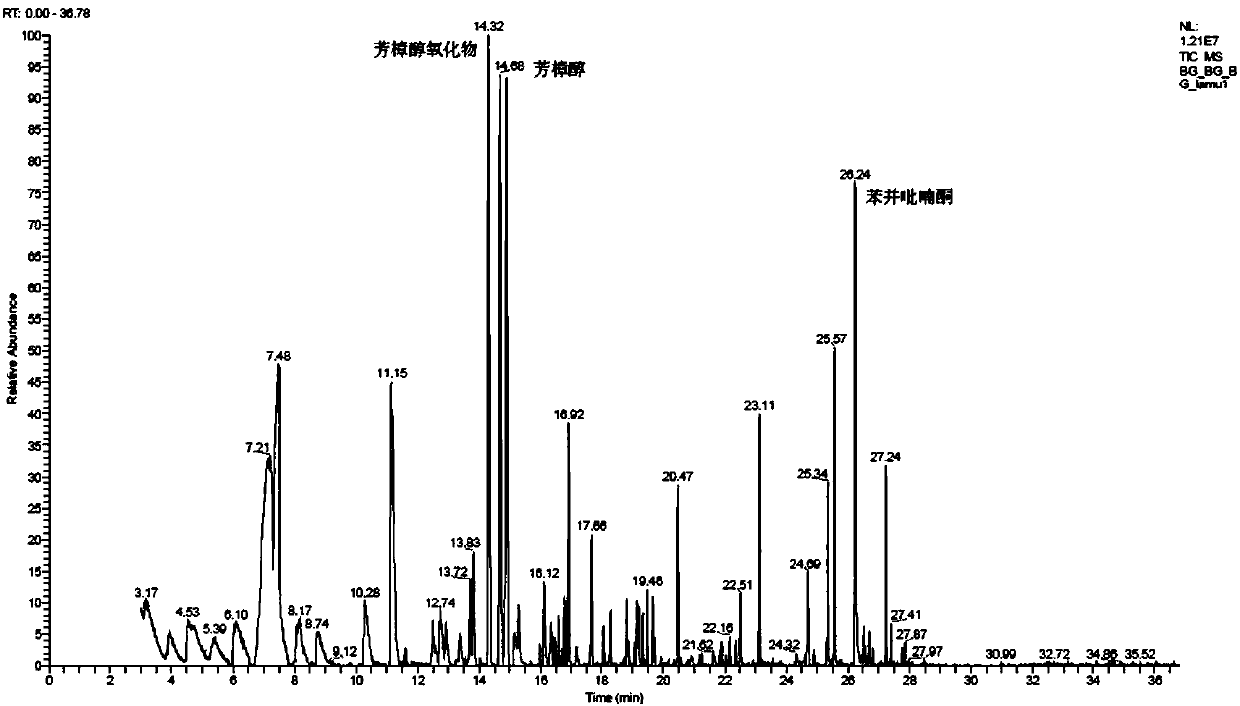Aspergillus niger and applications of Aspergillus niger in fermentation of Moringa leaves
A technology of Aspergillus niger and Moringa leaves, which is applied in the field of microorganisms, can solve the problems of Aspergillus niger application that has not been reported, and achieve the effects of improving flavor, nutritional value and feeding quality
- Summary
- Abstract
- Description
- Claims
- Application Information
AI Technical Summary
Problems solved by technology
Method used
Image
Examples
Embodiment 1
[0025] 1. Obtaining the original strain
[0026] Take 10g of Moringa oleifera leaves, add 100mL of sterile water, stir at room temperature for 20min in a sterile room, let stand for 10min, take the supernatant and dilute with sterile water. Spread the diluted solution on the tiger red agar plate medium, and incubate at 28°C±0.5°C for 5-10 days. Pick and produce Aspergillus niger spores and continue to streak culture until a single colony is obtained. Five purely cultured Aspergillus niger strains were obtained, named lm_2017, 1m_02, 1m_03, 1m_04, 1m_05, respectively. After 24 to 48 hours of cultivation, the mycelium becomes white and fluffy. After that, the color of the mycelium becomes darker, and black conidia are produced after 60 hours. The apical capsule of the conidia head is spherical or subspherical, black, with double-layered stalks of different lengths, arranged radially.
[0027] 2. Fungal 18sDNA sequence
[0028] In order to further identify the bacterial strai...
Embodiment 2
[0031] To prepare the activated medium, dissolve 8.7g tiger red agar medium powder into 250mL water, and sterilize at 121°C for 30min to make plate medium. Asp.niger lm_2017, 1m_02, 1m_03, 1m_04, 1m_05, T8, T10, A, B, and C were inoculated on the activated plate medium respectively, and cultured statically at 28°C for 5-6 days.
[0032] Then crush the leaves of Moringa oleifera to 20-40 mesh, add tap water and mix without adding other auxiliary materials, the total water content of the mixture is 63wt.%; the mixture is sterilized at 120°C for 15min, and after cooling, inoculate activated lm_2017, 1m_02, 1m_03, 1m_04 , 1m_05, T8, T10, A, B, C, the inoculum amount is 0.037% of the weight of Moringa oleifera leaves, the thickness of the mixture is 5-8cm, and the solid-state fermentation is aerated for 36-60h under the condition of 28°C ± 0.5°C. The fermentation results are shown in Table 1.
[0033] Table 1 Comparison of flavor and speed of Moringa oleifera leaves fermented by d...
Embodiment 3
[0038] The activation method of Asp.niger lm_2017 is the same as in Example 2.
[0039] First, the leaves of Moringa oleifera were crushed to 20-40 meshes, then mixed with tap water without adding other auxiliary materials, so that the total water content of the mixture was 45wt.%; the mixture was sterilized at 120°C for 15min, and inoculated with activated lm_2017 after cooling, the inoculum size was 0.037% of the weight of Moringa oleifera leaves, the thickness of the mixture is 5-8cm, and it is aerated and solid-state fermented for 36h under the condition of 25°C. The fermentation results are shown in Table 2, Table 3 and figure 2 . The bulk fermented product is moderately crushed and then air-dried at 35-40°C until the water content is less than 10wt.%, crushed and passed through a 60-mesh sieve, and mixed with other diets at an additive amount of 5-15%; the fermented block can also be used without Dry it, and feed it directly with the diet at 5-15% on a dry basis.
PUM
 Login to View More
Login to View More Abstract
Description
Claims
Application Information
 Login to View More
Login to View More - R&D
- Intellectual Property
- Life Sciences
- Materials
- Tech Scout
- Unparalleled Data Quality
- Higher Quality Content
- 60% Fewer Hallucinations
Browse by: Latest US Patents, China's latest patents, Technical Efficacy Thesaurus, Application Domain, Technology Topic, Popular Technical Reports.
© 2025 PatSnap. All rights reserved.Legal|Privacy policy|Modern Slavery Act Transparency Statement|Sitemap|About US| Contact US: help@patsnap.com



